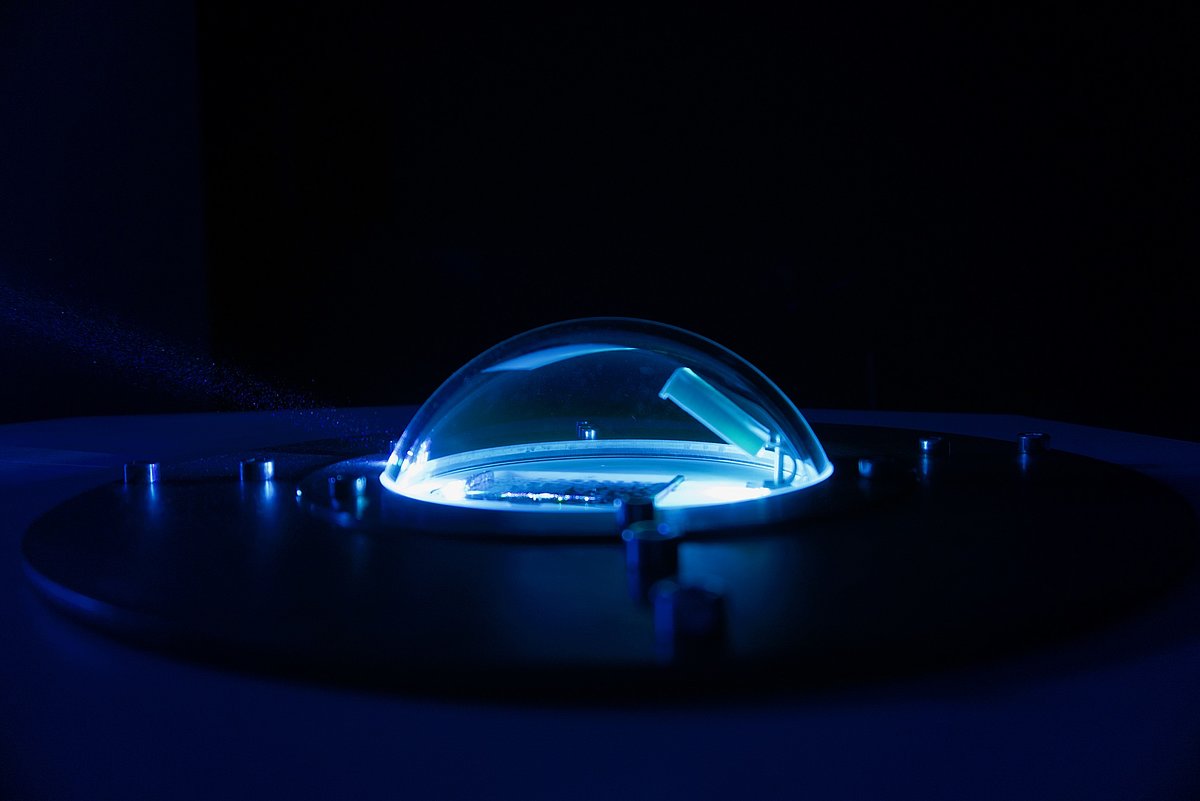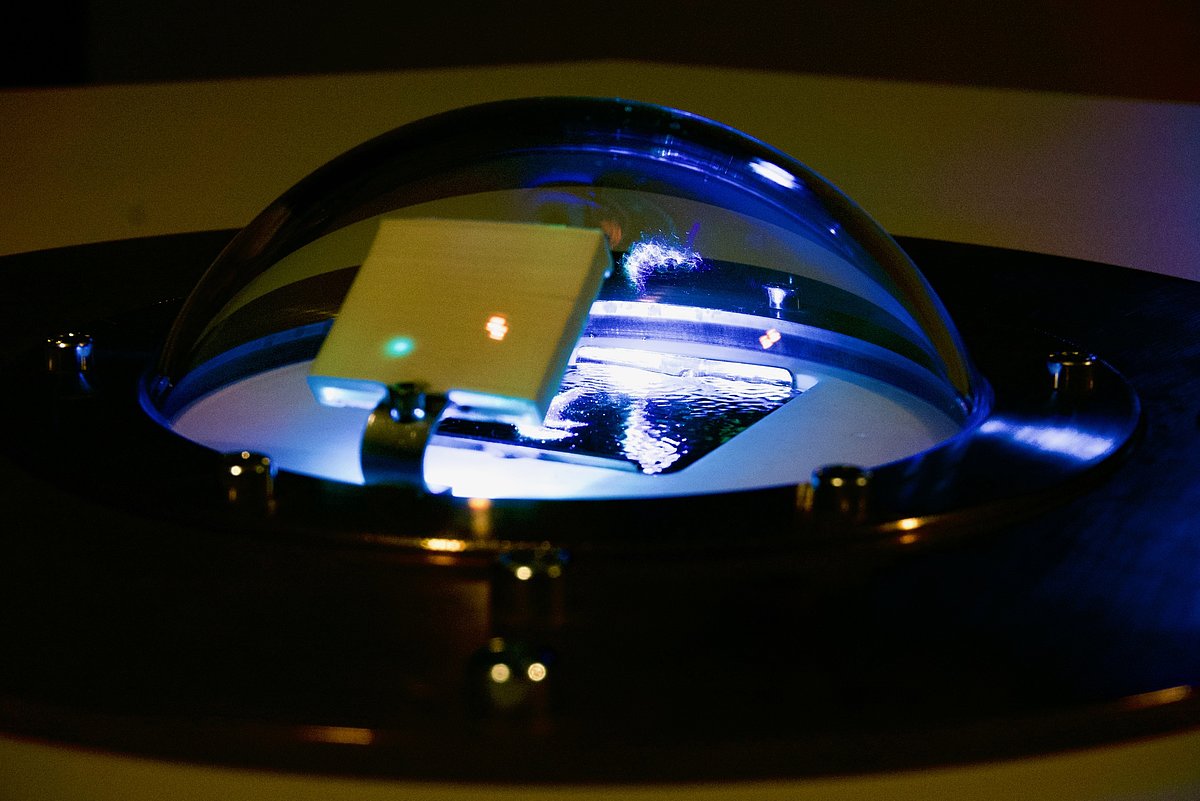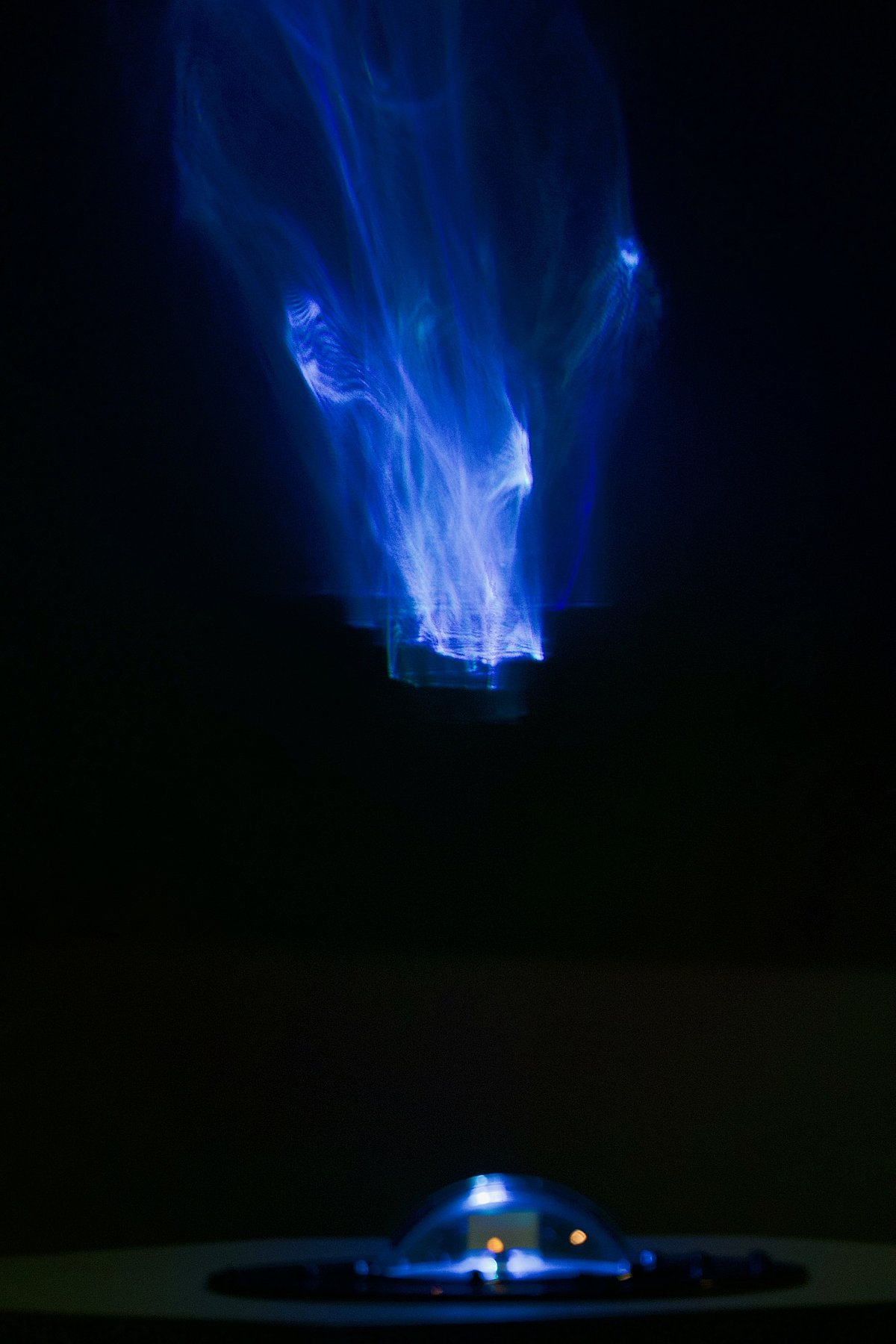
The artwork is created in the framework of the programme celebrating Latvia's centenary. It speaks of fluctuations of the Earth’s surface in the language of art. "Oscillations" perceive the current seismic data of Global Seismic Network GEOFON and make them audible.
The centre of the work contains a liquid metal cell, which, like the Earth's hot core, is in liquid state. The Earth's fluctuations received by the work initiate a deformation on the liquid metal mirror surface and via concentrated light beams reflect Earth's vibrations.
Participation of V. Johansons in the exhibition is an event that belongs to Latvia’s Centenary programme. The curators of the exhibition emphasize that the world of sound is a twilight zone, where art, music and technology have met for ages, creating visible sounds and audible images. At the beginning of the 20th century, many artists began to perceive the sound as a raw material of artworks, until it became one of the most important components of installation and sculpture. Therefore, the exhibition "Tendencies", taking place in one of the most recognised European art centres, is an occasion where artists particularly emphasize the importance of sound in contemporary art.
The exhibition "Tendencies" is held for the third consecutive year and highlights the interaction of art, technology and science. This year's exhibition is devoted to exploring sound in art, along with the work of Voldemārs Johansons presenting the sound installations by the three Belgian artists Christoph de Boeck, Aernoudt Jacobs, and Kurt d’Haeseleer, and the international artists Pascal Broccolichi (FR) and Katerina Undo (GR).

 Academic Centre
Academic Centre
